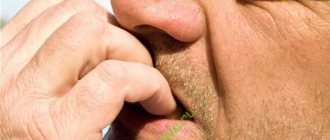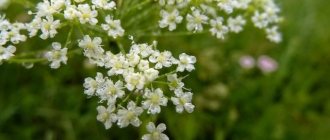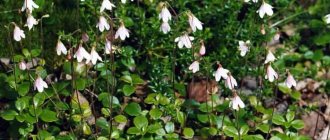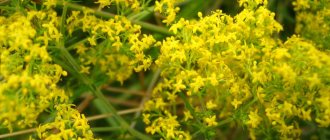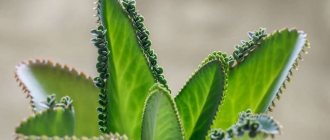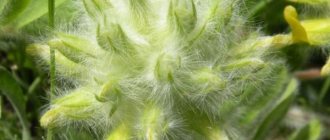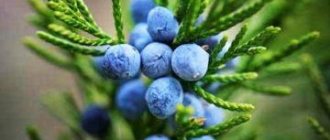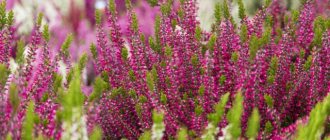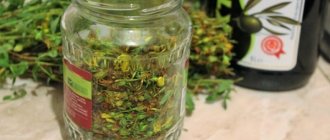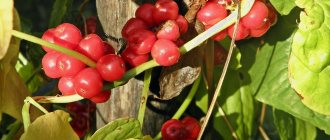Botanical description
An erect herbaceous plant grows up to 50 cm in height. The taste of the herb is bitter, and the plant itself has a strong odor.
The stems are covered with a waxy coating.
They are thin and thick, tangled, slightly grooved, so delicate that they lie down at the slightest gust of wind.
Compared to the above-ground part, the root system is quite weak and fragile - you can easily pull out the plant with its roots without making much effort.
The thin leaves are divided into several narrow, wedge-shaped segments.
Mature plants have dark pink leaf tips. The gray-green color of the leaves makes it look from afar like a cloud of smoke above the surface of the earth.
The smoker blooms all summer. Miniature, irregularly shaped purple-pink flowers, ranging from 20 to 40 pieces, are collected in an erect raceme. 4 free petals (2 outer and 2 inner) form an elongated corolla.
The tips of the petals are joined, giving the flower a tubular shape. The upper part of the “tubes” is painted in a more intense and dark color. Such two-color inflorescences stand out well in nature and make the smoker easily recognizable among similar plants.
The fruit is a single-seeded, indehiscent spherical nut.
Obtaining medicinal raw materials
More often, leaves are used as medicinal raw materials, less often whole plants. It is better to collect during the flowering period, namely May to August. The shoots are chosen to be erect, preferably not contaminated with soil.
In another article we described: Cissus: description of a houseplant
You need to dry quickly so that the stems do not turn black, laying them out thinly on a flat surface. When drying in ovens, the temperature must be kept within 45-50*C. It is recommended to store it in wooden containers, but you can also store it in glass. Savings period – no more than 2 years.
Chemical composition
The fume herb is of interest to pharmaceuticals because of the alkaloids it contains, which make up 1.25% of the total components of the chemical composition. Flavonoid glycosides and isoquinolone alkaloids are the active components of fumaria officinalis. They are responsible for the beneficial properties of the smoker.
The chemical composition of the smoker is:
- alkaloids (protopine, coolerin, fumaritin, fumaricin);
- plant acids (fumaric, malic, caffeic, chlorogenic acids);
- flavonoids (rutin, quercetin, kaempferol);
- vitamin C;
- choline;
- slime.
Medicinal properties of smokeweed
Common smoker has antispasmodic, analgesic, choleretic, slightly diaphoretic, mild diuretic, laxative, tonic, and restorative effects.
Studies have shown that the use of fume causes a significant increase in the number of red blood cells during the first eight or ten days, the number of which decreases after an increase in the general tone of the body. Therefore, after 8 days of use, you need to take a 10-day break.
The healing properties of smokeweed have been known for a long time. It has proven itself in the treatment of liver and skin problems.
Liver
Fumigata is an excellent liver cleanser. Alcohol, tobacco, exhaust fumes, cosmetics and detergents, perfumes, artificial food additives - all of this, to one degree or another, poisons our body, clogging it with toxins. Our liver tries to neutralize the harmful effects of toxins by filtering the blood and clearing it of harmful substances. With food or other abuse, the liver is often overloaded.
Fume not only cleanses the liver, but also relieves symptoms associated with biliary dyskinesia, cholecystitis, cholelithiasis, and cirrhosis of the liver.
Leather
The skin is our secondary excretory organ. When the main excretory organ is overloaded, toxins are eliminated through the skin. This does not go away painlessly for her - acne, eczema, psoriasis, and itching appear on the skin.
Due to its anti-inflammatory, antibacterial and antihistamine properties, fume is effective against gram-positive bacteria that cause skin diseases.
Arthritis
The anti-inflammatory properties of fumes have a beneficial effect on arthritis and joint diseases.
Conjunctivitis
An infusion of fume grass has traditionally been used to treat conjunctivitis and other eye diseases.
Gallstones
The medicinal herb fume prevents the formation of gallstones and acts as an antispasmodic for acute pain.
Epilepsy
Recently, scientists have given preference to plant materials when developing one or another drug for the treatment of brain diseases. Herbal medicines usually have a complex effect on the pathogenesis of the disease. This property is due to their multicomponent composition.
In laboratory studies, the anticonvulsant properties of fume were discovered. The potential of this plant gives hope that fume for epilepsy is a real prospect in the treatment of this neurological disorder.
Biliary dyskinesia
Fumitory extract normalizes the amount of bile secreted, restores normal motility of the gallbladder and its ducts, thereby facilitating the flow of bile into the intestines.
Dymyanka for dyskinesia is a therapy recognized by official medicine. It can both increase the outflow of bile and reduce its inadequate amount entering the duodenum.
Contraindications
Despite the fact that this is a very useful herb, there are still contraindications to the use of the herb. Let’s make a reservation right away: smokeweed is a poisonous plant, which is why drugs based on it should be taken strictly according to the prescribed prescription.
Pregnant women, nursing mothers and children under 12 years of age should not take such drugs at all. In addition, individual intolerance to smoke or its component is possible.An overdose is fraught with frequent urination, abdominal cramps, and gastrointestinal disorders.
Pharmacy products based on smokeweed
Medicinal herb is a dried, crushed herb. But it can also be found in pharmaceutical choleretic preparations, dietary supplements, homeopathic preparations, tinctures and ointments.
Gepabene
This pharmaceutical preparation of herbal origin includes an extract of fumaria officinalis, which normalizes the secretion of bile, as well as an extract of the fruits of milk thistle.
Milk thistle is a well-known hepatoprotective plant. Gepabene is recommended for use as part of complex treatment for biliary dyskinesia, chronic hepatitis, fatty liver and chronic toxic liver damage.
Psoril
Psorilom is a combined homeopathic remedy for the treatment of psoriasis.
The active ingredients of psoriloma are:
- smoker,
- graphite is a healing mineral,
- barberry,
- goldenrod,
- oakleaf toxicodendron,
- potassium bromate.
Oddibil
Finely ground smoke powder is presented in this preparation in the form of coated tablets. Oddibil is an analgesic and mild laxative, regulates bile secretion.
Indications for use:
- biliary colic,
- migraine of bile-hepatic origin,
- digestive disorders,
- condition after cholecystectomy.
Use in folk medicine
In traditional medicine, decoction, tincture, and fresh smoke juice are used for treatment. The smoke of burnt dry grass was once considered beneficial. They fumigated people with mental disorders and simply sick people. They believed that the smoke drove away all kinds of diseases.
Strengthening tea
This tea cleanses the body, has a slight sedative effect, improves digestion and well-being, strengthens the immune system, and restores strength.
- 1 tbsp. a spoonful of dried smoke herb;
- 200 ml hot water.
Pour boiling water over the herb, cover and wait 10-15 minutes. Then strain and drink warm. You can drink tea in two doses - morning and evening.
If the tea seems bitter to you and the concentration is high, you can start with one teaspoon per glass of water. Then, if necessary, add to a tablespoon.
Choleretic infusion
The choleretic infusion is stronger than restorative tea. This infusion increases the production of bile acids and stimulates the flow of bile from the liver. Bile acids bind to harmful toxins, making it easier for the body to eliminate them from the body.
- 2 tbsp. spoons of dry smoke herb;
- 200 ml hot water.
Pour boiling water over the raw materials and place in a water bath. Heat for 20 minutes and remove from heat. Cool at room temperature for 40 minutes and add, if necessary, boiled water to restore the original volume.
Drink 1/3 glass 3 times a day half an hour before meals.
Infusion for a good appetite
Lack of appetite can be due to stress, fatigue, digestive problems, or simple malaise. In cases where the loss of appetite is temporary and is not associated with serious problems, try an infusion of fume. Drink a small cup (150 ml) of weak dry herb tea 10 minutes before meals.
- 1 teaspoon of dry herb;
- 150 ml boiling water.
Pour the herb into a cup and pour boiling water over it. Wait 5-10 minutes, strain and drink.
Tincture for skin problems
To prepare a tincture from fresh herbs, the components must be taken in equal proportions (1:1). When using dry raw materials, take 4 parts alcohol (70% alcohol) for 1 part herb.
Combine the ingredients in a dark glass container, close the lid and leave in a cool place for 10 days, shaking occasionally. After 10 days, the tincture can already be used. You need to take 3 times a day, 20 drops half an hour before meals.
Herbal decoction for psoriasis
The decoction can be taken orally and also used externally to treat skin diseases.
- 1 teaspoon fume powder;
- 1 teaspoon of string;
- 200 ml water.
Combine the ingredients in an enamel container and place on fire. Bring to a boil, simmer for 5 minutes and turn off. Leave to cool. Take 50 ml 3 times a day.
Ointment for hemorrhoids
Grind the dry herb in a coffee grinder to a powder. 2 tbsp. Mix spoons of this powder with 100 g of Vaseline until smooth.
Regularly lubricate hemorrhoids with this ointment until relief occurs.
Use
Scientific medicine does not currently use this plant.
In folk medicine, fume is consumed in the form of freshly squeezed juice along with beer or whey: 20-25 g of juice per glass; take 2-3 glasses a day.
This remedy is used after prolonged fever, with hemorrhoidal bleeding, with pulmonary tuberculosis, after serious illnesses, and in general when trying to maintain the strength of a person recovering after a long, debilitating illness.
When acne, lichen, or various rashes appear on the body, smear the affected areas with freshly squeezed juice from the smoker. Fresh juice from the smoker has a detrimental effect on scabies mites. At the beginning of scabies, when the mites did not multiply abundantly, help came unconditionally.
In winter, dried fume is used for catarrh of the stomach with low acidity: With beer or whey - 10.0 g. For half a liter of beer, boil for 7-10 minutes. Drink the entire portion per day.
For catarrh of the stomach with reduced secretion, patients were cured by consuming the following mixture: Centauria - 2.0 g, St. John's wort - 2.0 g, Gentian - 2.0 g, Yarrow - 2.0 g, Wild chicory - 3 .0 g., Dymyanki – 4.0 g. The mixture is poured into 1 liter. Raw water, soak overnight and boil for 5-7 minutes in the morning; it infuses a little, it is filtered and drunk all day in 5 doses: Natoshak - 1 glass and during the day - 4 times half a glass.
It is very useful for weakened patients, especially after severe infectious diseases and large blood loss. Herbal infusion and freshly squeezed juice strengthen the overall tone of the body, increase appetite, and have a beneficial effect on the functioning of the heart. In folk medicine, fume is used for lack of appetite, intestinal atony, chronic female diseases, jaundice, hemorrhoids, kidney stones, and inflammation of the bladder.
Dymyanka is contraindicated in hypertensive crises. You should not get carried away with it if you have gastritis with high acidity or heart disease accompanied by tachycardia. It is also contraindicated during pregnancy.
The alkaloid fumarin, a bitter substance, fumaric acid (Mosig, 1961), resin, mucilage (Norre, 1958) were found in the medicinal fume grass.
A decoction of the herb fumyana officinalis is used for nervous diseases (69) (Nikolaeva, 1964).
Fumitaria officinalis is used in Western European medicine as a gastric and laxative (Norre, 1958); in homeopathy for eczema (Schwabe, 1934).
In folk medicinal practice, fume is widely used. It is used internally as a decoction for hemorrhoids and dyspepsia. To treat catarrh of the stomach with low acidity, boil the fume in beer: 10.0 - 400.0 or 500.0 (that is, two teaspoons per 2.5 cups of boiling water), boil for 7 - 10 minutes. Take half a glass five times a day. A decoction of fumes is also used for leucorrhoea, chronic diarrhea, pulmonary tuberculosis (as a tonic), dropsy, and prickly heat; externally for scabies (fresh juice or tincture).
This plant is used as an expectorant for bronchitis and as a sedative for abdominal pain. Homeopathic pharmacies sell essences from fresh flowering smokeweed.
Methods of application. Decoction: 15.0 - 300.0, or one part herb to twenty parts water; one tablespoon three times a day.
Article on the topic: Angular onion - useful properties, description
Tincture: 25.0; 30 drops three times a day. Fresh juice (for scurvy): 30 - 50 drops three times a day.
Ointment: one part juice or condensed broth to four parts butter or petroleum jelly.
Dymyanka in cosmetology
Fumiya officinalis preparations have astringent and bactericidal properties, which explains its widespread use in cosmetology. Often psoriasis or other skin problems occur due to a lack of fumaric compounds. Fumaric acid, obtained from smokeweed, is included in medicated anti-dandruff shampoos. It is also present in lotions for problem skin.
At home, an alcohol tincture of fume will help fight problem skin. Wipe problem areas every day with wild rue tincture or decoction.
And dry herb powder mixed with baby or other neutral cream will become a valuable skin care product. This cream whitens the skin, gives it elasticity and firmness.
Photo of fumaria officinalis
- Lyubka bifolia - medicinal properties and the best recipes from traditional medicine (110 photos)
- Jaundice - description of the plant, medicinal properties and features of use in folk medicine (80 photos)
Field thistle - medicinal properties, recipes, uses and contraindications of thistle (video + photo)
Read here! Mullein: properties, application, contraindications and features of creating medicinal preparations based on the plant
Please repost
0
